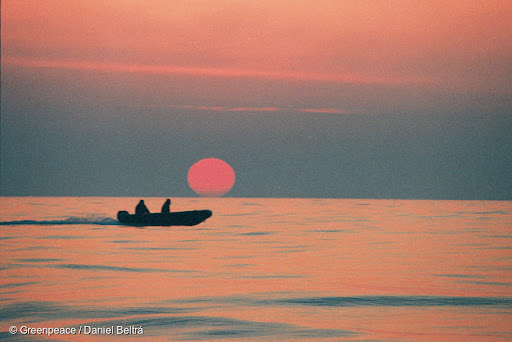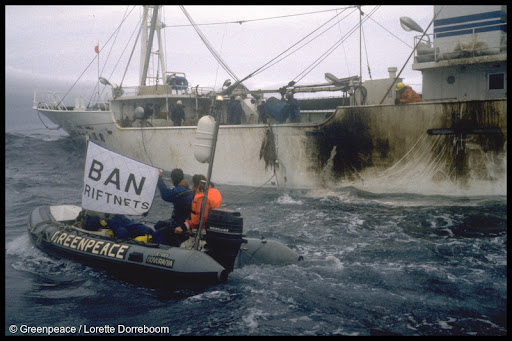For Evergreen 2022
Reflect on one of Greenpeace’s historical victories in establishing a United Nations ban on driftnet fishing.

A picturesque view of a Greenpeace Zodiac raft on a tour in the Mediterranean sea against driftnets. 24 May 1998.|GP protest at Japanese driftnetting
One of Greenpeace’s most influential and ongoing campaigns has been our actions against the use of driftnets by fishing vessels. Our work reached a turning point in the 90’s when we influenced the United Nations ban on large driftnets.
Large-scale drift nets are capable of wiping out marine life across a large area. Not only fish, but also dolphins, sharks, seals, squids, and many species of birds are susceptible to becoming tangled up and dying as bycatch.
In 1983 Greenpeace launched a campaign against driftneting in the Bering Sea in the United States. Brave activists documented the crew of the Japanese driftnet vessel, Yahiko Maru, killing porpoises and seabirds via driftneting. Then, the Greenpeace crew sought to intervene in the ship deploying another driftnet.
Activists boarding zodiacs stuck close to the driftnet vessel, putting themselves between the boat and the water to stop the fishermen from deploying their deadly traps.
Meanwhile, Greenpeace contracted an American television network to produce a documentary about the harms caused by driftneting; From No Man’s Land, a Porpoise Cries. The documentary was aired internationally, and fuelled public outrage over the practice.
In 1989 we saw our labours bear fruit when the United Nations enacted a moratorium on driftneting in international waters, followed by a ban on the use of driftnets longer than 2.5km within international waters in 1992.
Japan, once one of the largest perpetrators of drift-net fishing, also announced they would be banning the use of large driftnets in 1992, despite originally opposing the UN’s ban.
To this day, Greenpeace continues to document vessels who use driftnets illegally or employ other fishing methods such as trawling, that are cruel to intelligent marine life and unsustainable for the planet and the economy.

GP protest at Japanese driftnetting

